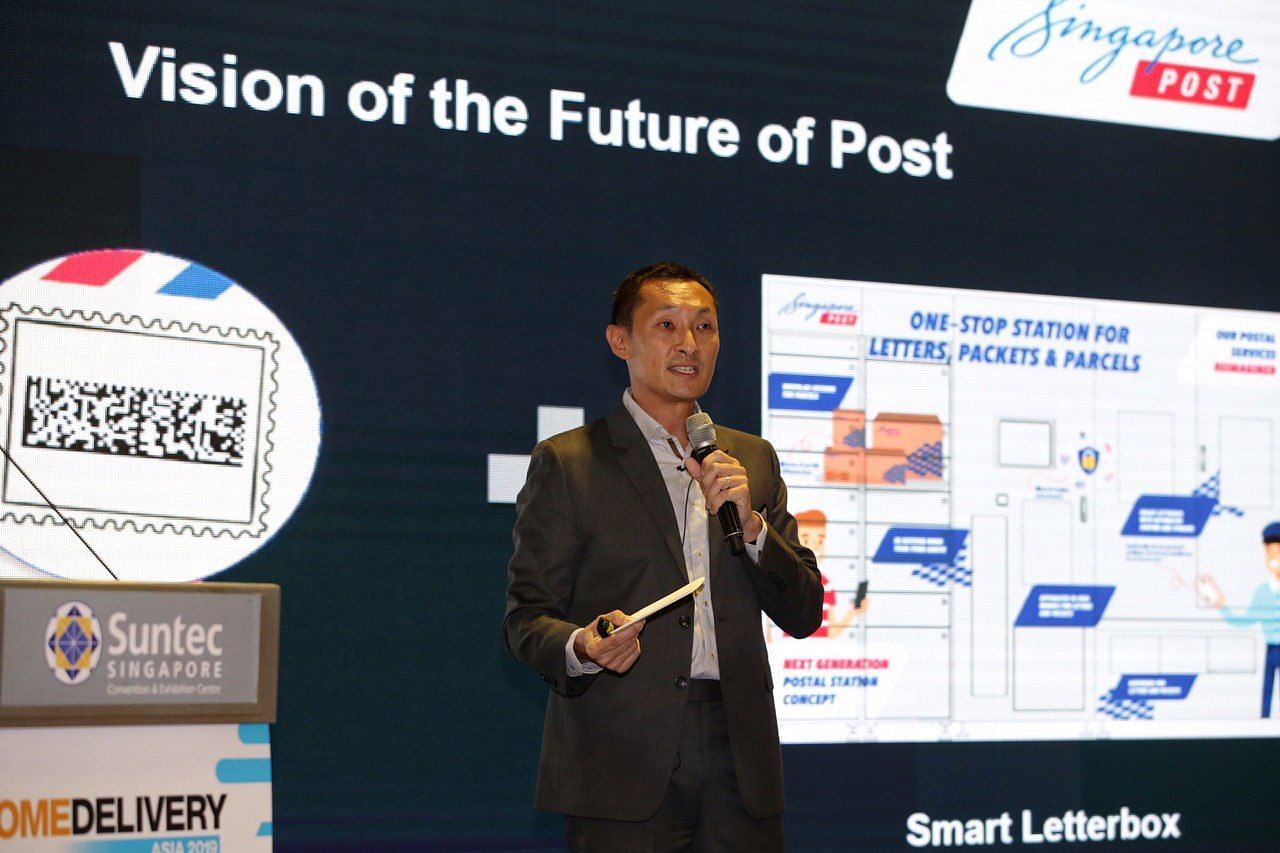SingPost unveils smart stamp, letterbox prototypes
Sign up now: Get ST's newsletters delivered to your inbox
Tiffany Fumiko Tay
Follow topic:
SINGAPORE - Individual letterbox units may one day make way for vending machines that dispense both letters and parcels, turning overstuffed letterboxes and missed deliveries into problems of the past.
SingPost unveiled prototypes of a new smart stamp and letterbox system that aims to cut down on lost and misdelivered mail, and improve delivery efficiency on Tuesday (Sept 24).
Together, they would enable Singapore residents to track mail items at every stage of their journey, receive notifications when they arrive, and retrieve them from a storage unit using facial recognition and other forms of authentication.
The smart stamps, embedded with data matrix codes - similar to a QR code - can encode information on the sender and receiver. If rolled out, it would allow all basic mail items to be tracked.
The smart letterbox concept, demonstrated in the form of a machine with a touch-screen interface, scans the data matrix codes to sort letters and packets deposited by postmen into storage slots.
Their contents can be retrieved using a smartphone app, among other forms of authentication. The machine can also be integrated with a parcel locker unit.
The innovations, which SingPost claims as world firsts, were unveiled by its Singapore head and chief executive of postal services Vincent Phang at the Home Delivery Asia retail logistics conference and exhibition on Tuesday.
He said in a speech that the innovations represent SingPost's vision of the future of the postal service.

If realised, the new system would address challenges such as productivity, while significantly reducing SingPost's carbon footprint, he added.
Speaking on the sidelines of the event, Mr Phang said SingPost is in discussions with the authorities on the system's possible implementation, but there are no concrete plans for now.
He declined to reveal the cost of SingPost's investment in the system and the potential cost of a nationwide roll-out.
"This technology is available in the market - it's just putting the whole thing in place together as a complete workflow," he said.
Asked if the use of smart stamps would lead to higher postage rates, he said it is too early to comment.
On whether the stamps would be used only for local mail, he said: "We hope at the national level we can have it for every delivery, but at international level there's consistent discussion around making every single delivery trackable. And perhaps that could be our contribution to the international framework at some point in time if it's demonstrated that it works here."
As a dense city-state with mainly high-rise buildings, Singapore has "natural advantages" in trialling the proposed smart postal system, he said.
As a dense city-state with mainly high-rise buildings, Singapore has "natural advantages" in trialling the proposed smart postal system, he said.
He told The Straits Times in July that SingPost was working on a smart stamp prototype that would enable mail articles to be scanned and tracked throughout the delivery process.
Larger and smarter letterboxes have also been on the cards as most e-commerce deliveries sent through the mail are shoebox-sized and cannot fit in a standard letterbox.
They are part of plans by SingPost to upgrade the postal infrastructure, which has come under strain as letters are replaced by larger e-commerce items.
Role specialisation for postmen and the extension of doorstep delivery hours are among the measures that have been put in place by the postal service provider to address service lapses that have plagued it since the start of the year.
Mr New Soon Tee, director of the trade and connectivity cluster at the Infocomm Media Development Authority (IMDA), said at the event's opening address that last-mile delivery operators have been challenged by the growth of e-commerce.
The IMDA's Locker Alliance pilot, launched in December last year, has helped to address issues such as failed deliveries, which are costly as return shipments cost almost three times as much as parcel deliveries, he said.
It allows Punggol and Bukit Panjang residents to collect their purchases from e-commerce sites, such as Lazada and Taobao, from more than 60 parcel lockers located at Housing Board blocks.
The lockers, operated by SingPost and blu, are also located at MRT stations in Bukit Panjang, Chinese Garden, Lakeside and Boon Lay.
More than 44,000 locker transactions have been performed as of August, said Mr New, who called on e-commerce and logistics professionals attending the event at the Suntec Singapore Convention and Exhibition Centre to join the alliance.
The IMDA, which administers the Postal Services Act, said in response to queries that it is "supportive of SingPost's move to harness technology to improve its operational efficiency and service standards".
"IMDA will review SingPost's proposals when we receive them," it said.
"IMDA will review SingPost's proposals when we receive them," it said.

